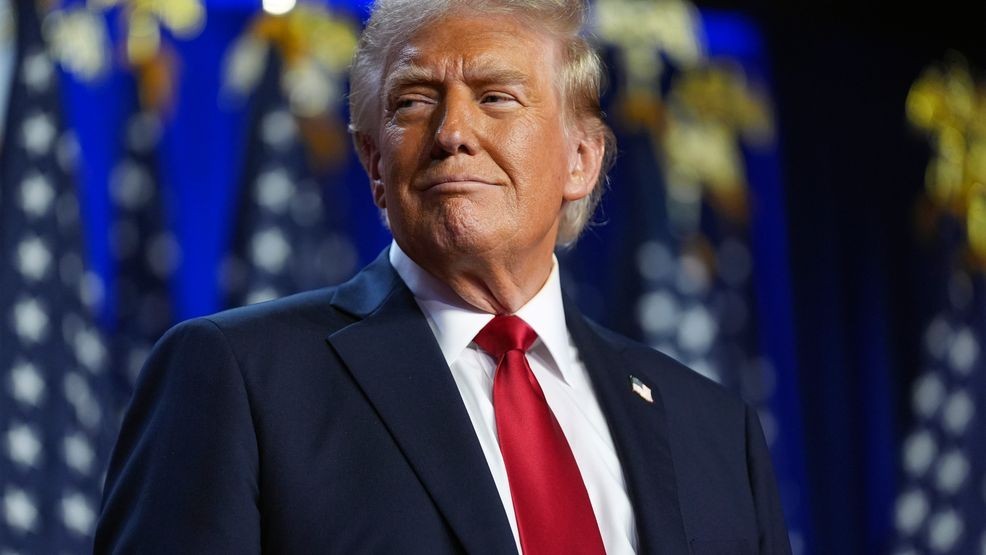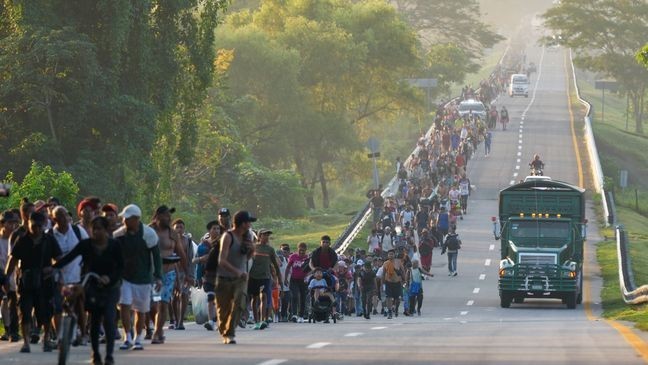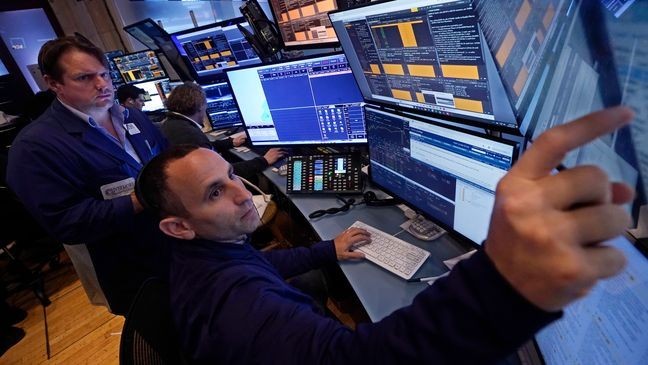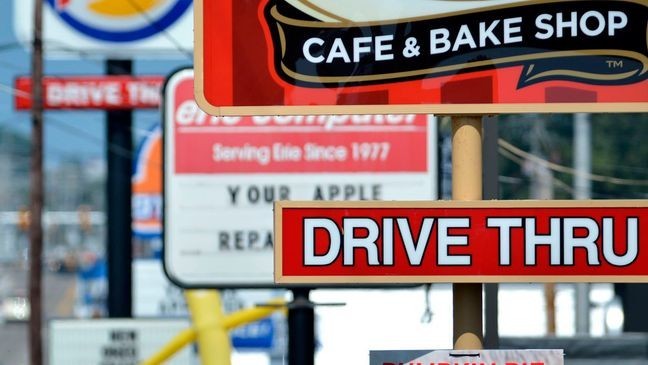How inflation could do to Trump what it did to Biden and the Dems in 2024 election
HUNT VALLEY, Md. (TNND) — Inflation ran through the U.S. economy like wildfire during the early part of President Joe Biden's administration, bringing prices to intolerable levels for many Americans. As Biden wraps up his term in office, many economists argue President-elect Donald Trump could be staring at a similar situation if his economic agenda is fully put into play.
Price spikes ran through the economy at a rapid pace before flattening out substantially after the Federal Reserve began hiking interest rates in March 2022. Bringing rates to a near 40-year-high helped drop inflation down from near double digits to the Fed's preferred 2% target, but it also made borrowing more expensive and caused mortgage rates to balloon.
As the Fed eases up on the reins, that's left the U.S. economy in a vulnerable position. Mortgage rates are still hovering around 7%, even as the labor market remains resilient and gross domestic product continues running at 2.8% in the third financial quarter, according to estimates put out by the Bureau of Economic Analysis.
Economists argue two main factors drove the post-pandemic inflation: lockdowns and several multi-trillion-dollar stimulus packages put out by Trump during his first term and Biden shortly after ascending to the White House. Goosing demand at that level, while the economy was shut down, caused spikes everywhere along the supply chain.
Now there's concern a second Trump administration could reaggravate inflation, but for reasons unrelated to what happened during COVID.
“There’s a lot of inflationary pressure in his promises,” Simon Johnson, one of the 2024 winners of the Nobel Prize in Economics and a professor at MIT’s Sloan School of Business, told Time Magazine Monday. That's a reference to Trump's aim of enacting tariffs on 60% of goods from China and tariffs on 10% of all imports into the United States.
Vice President-elect JD Vance hinted during the campaign that much of Trump's focus would be toward using tariffs as a type of negotiating tactic to create more favorable trading conditions. Going that route could help blunt any possible impact on prices.
Some economic analysts argue that across the board tariffs are justifiable. Strategic tariffs would not be enough to successfully bring the nation's trade deficit into balance, nor fully restore the United States' industrial capacity, according to Michael Pettis, a professor of finance at Peking University in China.
Pettis prefers reinitiating the kind of capital controls the U.S. and other developed nations that were popular during the New Deal era. He believes such controls, which restrict the flow of capital out of the country, would be much more pinpointed than tariffs, which he says impose inflationary costs on everyone.
To make a splash during his final term in office, Trump might keep to his pledge for tariffs on all imports. Capital controls could create a lot of friction with the business CEOs and executives who backed his 2024 presidential campaign.
Analysts also point to the former president's focus on extending his 2017 tax cuts and mass deportations to justify their fears. Johnson -- the MIT Nobel prize winner -- thinks dropping taxes further would stimulate spending and create a situation where there's not enough supply to meet demand.
Other economists feel the same, with some arguing Americans and the world are living in a fragile inflationary era where tax cuts could act as a trigger pitching prices upward. The bond market is also signaling an expectation that inflation will take another step forward.
Since the Fed began bringing rates down after keeping them elevated, long-term yields on bonds have shot up 79 points. Part of the reason is the rising cost of the national debt, along with the expectation of new borrowing under Trump's next administration.
Unlike stock traders, investors who buy bonds are doing so under the belief prices will go up. During his first term, Trump kept track of the New York Stock Exchange and whether stocks were rising or falling given his actions or inactions. He sometimes reversed himself on some decisions if stocks reacted negatively.
Such is the case when he considered firing Fed Chairman Jerome Powell after the central bank increased interest rates. Stocks fell nearly 5% on the news. He eventually put out a press statement assuring investors he didn't believe he could fire Powell before his term expires in 2026.
To stem galloping prices in a second Trump White House, the Fed would likely have to step back in and begin another round of monetary tightening. That could result in Trump threatening again to terminate Powell's chairmanship, which could cause stocks to react negatively again.
The former president -- who believes rate increases are almost never necessary and, in some cases, aggravate inflation -- could select someone who shares his view on monetary policy after Powell's term ends. If his replacement complies with Trump and avoids hikes, there wouldn't be any tools available to the Fed to stem price increases.
Mass deportations are also a factor drawing economists' attention. There are roughly 11 million illegal immigrants in the U.S., according to Department of Homeland Security data. But Trump's focus for right now is mostly on deporting immigrants with criminal records.
Goldman Sachs estimated in June that about 8% of that population have criminal convictions. The unemployment rate stands at 4.1%, even as the Fed's rate hikes have taken hold, suggesting a substantial labor shortage if the U.S. executes a large-scale deportation effort.
Businesses would struggle to find people willing to work for low pay and the supply of goods would take a hit, like what happened during the pandemic when immigration flow was halted due to the virus. Under a mass deportation plan of that magnitude, inflation could peak at 0.5 percentage points higher under a deportation plan, according to a report by the University of New Hampshire.




